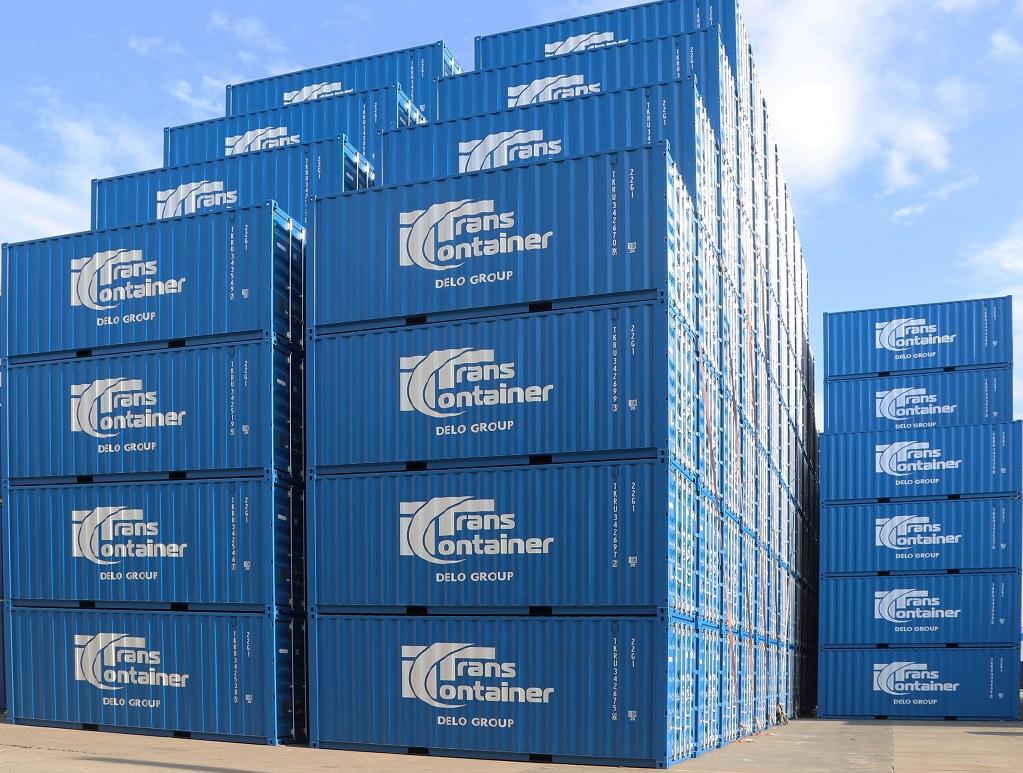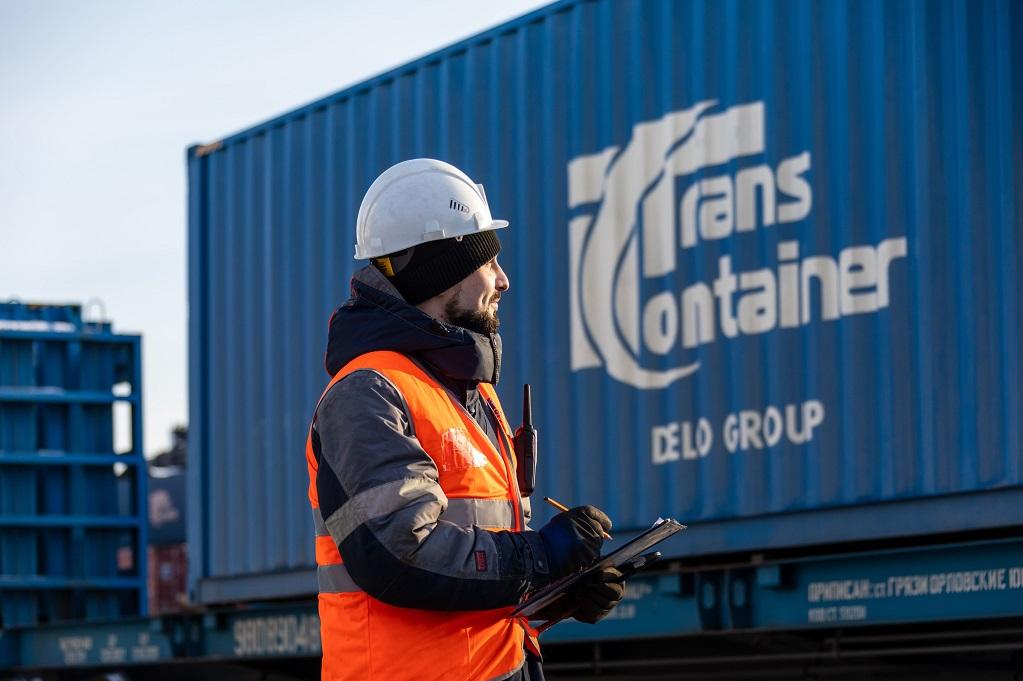Glossary
3PL (third-party logistics)
This term is used when logistics services are purchased from a third party. A company that
provides 3PL services assumes responsibility for all logistics and transportation operations, including interaction with suppliers and purchasing, allowing clients to significantly reduce, or even cease to require, their own logistics capacity.
An empty run ratio
The average distance of an empty trip of a flatcar or container divided by the average distance of the total trip by the flatcar or container, respectively.
Bulk container
A container used to ship bulk loads without necessarily needing additional capacity, it has apertures for loading and unloading dry goods in bulk.
Carrier
An individual or legal entity that has assumed the obligation, under a contract, of carriage
by general-use rail transport, to deliver a passenger, cargo or luggage from the point of departure to the point of destination and to hand the cargo or luggage to a party authorised to receive it (the recipient).
Consignee
An individual or legal entity that is authorised to receive the freight or cargo.
Consignor
An individual or a legal entity that acts on its own behalf or on behalf of the owner of freight or luggage under a contract of carriage, as indicated in the shipping document.
Container
Transportation equipment for shipping cargo via various means of transport. Containers are durable enough for repeated use and can be stacked. Containers are divided into medium-duty (three- and five-tonne), which conform to former Soviet Union standards and are still used for shipments in Russia and the CIS, and ISO (20- and 40-foot) containers, which are used for Russian and international shipments. The universal standard unit TEU (twenty-foot equivalent unit) was introduced to measure transport flow volumes.
Container block-train
A train consisting of flatcars loaded with containers belonging to the carrier or to third parties. A train’s length and speed both comply with relevant legislation. A train is put together at its starting station and travels to its destination station without being divided en route and without any further re-consignment of the containers.
Containerisable cargo
Cargo fit for transportation by container, or cargo for which containers are the best or only possible means of transportation.
Containerisation
The use of containers for cargo transportation, supply and storage.
Containerisation level or Containerisation ratio
For a particular type of goods this means the volume of goods transported in containers as a percentage of the total volume of such goods transported; for a region or mode of transportation (e.g. by rail) it means a ratio of cargo tonnage actually transported in containers to the total tonnage of transported cargo which could be potentially transported in containers (containerisable cargo).
Container terminal
A place equipped for the trans-shipment and storage of containers. A container terminal
typically includes one or more container yards. Rail-based container terminals are equipped with spur tracks for loading and unloading containers to/from railroad platforms (cars).
Container turnaround
The number of containers handled upon arrival and departure at a port or station over a certain period of time.
Crossover bend
An essential part of a container’s design, a crossover bend is a standard mechanism for
fixing containers to transportation vehicles or to other containers. Crossover bends are usually located in the lower and upper corners of a container. Twist locks or other equipment allow the container to be lifted, stacked or fixed in place.
Containers whose length is not divisible by 20 feet (such as 45-foot containers), apart from corner ones, also have an additional set of crossover bends whose lattice is the same as those of 20- and 40-foot containers. This enables the same transportation and loading
equipment to be used.
Dangerous cargo
A cargo that can cause damage to property, human health or life if handled improperly. The shipment of such cargo is undertaken in accordance with special terms of transportation.
Delivery period
A period of time within which a carrier must deliver goods to a consignee and for which the
carrier is responsible to the cargo owners. The delivery period includes the time necessary to transport the goods from the departure point to the destination (including its loading and
unloading), to perform different associated operations and document execution. A delay in goods delivery against a set period incurs a fine payable by a carrier to a cargo owner, usually set as a percentage of carriage costs. A carrier is not required to pay a fine for delayed delivery in emergency and force majeure situations.
Domestic transportation or Domestic traffic
Transportation of containers where both origination and termination points (as indicated in the respective waybill) are located within the Russian Federation.
Door-to-door
An integrated logistics service for delivering freight directly from the warehouse of the consignor (the supplier of the goods) to the warehouse of the consignee (the recipient of the goods). As a rule, it includes not only transport by rail and delivery by road, but also the handling of freight at a terminal and (if necessary) the customs clearance thereof and payment pursuant to INCOTERMS 2000. It appeared in response to freight-owners’ desire for their orders to be handled by a single entity.
Empty run
For containers - transporting an empty container on a flatcar, for flatcars – a flatcar run without container(s) or any non-container cargo.
Export transportation or Export traffic
Export-bound container traffic, as indicated in the respective waybill.
Feeder service
Short-distance sea freight between two or more ports to group or distribute cargo (usually containers) in one of the ports for onward sea shipment or after such a shipment.
Feeder ship
Small ships capable of sailing in relatively shallow waters. These are used for collecting
containers for the feeder ship’s own route and then loading onto lead ships, or for unloading containers from lead ships for subsequently transporting containers from ocean liners on smaller routes.
Flatcar
A specialised type of rolling stock designed to carry ISO containers.
Flexi-tank
A flexible polymer tank with a capacity of up to 24,000 litres that is designed to ship liquids in 20-foot containers.
Forwarder
A party that carries out or organises transportation and forwarding services under a forwarding contract, such as organising cargo transportation, signing cargo transportation contracts, arranging loading and delivery, and so on.
Freight
A form of payment for sea transportation of cargo, or the use of a ship for a certain period of time. Freight payment is determined by the volume of cargo delivered to the destination
or by the volume of cargo loaded onto the ship.
Freight shipment
Freight shipped under a delivery contract. The following kinds of rail shipment exist: by car, part load, container, piggyback, route and group consignment.
Gantry crane
A crane or hoisting machine mounted on a frame or structure spanning an intervening space, which often travels on rails. Gantry cranes are usually used to service open (less often covered) warehouses, especially those for single cargos, containers and timber, assemble industrial and civil units, serve hydroelectric power stations, and assist in shipbuilding.
Gondola car
A type of rolling stock with a flat bottom and relatively low sides, used to haul material such as ore or scrap, and loaded and unloaded from the top. May be covered or uncovered.
Import transportation
Import-bound container traffic, as indicated in the respective waybill.
Intermodal haulage
The carriage of cargo, in one format via several modes of transport, where one of the carriers undertakes to organise the entire carriage of cargo from door to door. This includes delivery to the consignee’s warehouse, which can only be carried out by road.
International commercial terms (Incoterms)
International commercial terms are international rules acknowledged by government bodies, companies and businessmen throughout the world as an interpretation of the terms most frequently used in international trade.
As a rule, international commercial terms cover the sole rights and obligations of parties under an international purchase and sale agreement relating to the delivery of goods. Each term is a three-letter abbreviation.
ISO container or Container
A container manufactured according to specifications from the International Standards Organisation (ISO) and used for the intermodal transport of freight.
Isothermal container (thermos container)
A special container, with insulated walls, doors, floor and roof, that make it possible to maintain a constant temperature inside when transporting mainly food products.
Labelling
Signs, images and other identification marks with which containers are labelled. This helps link a cargo with its carriage documents, distinguishes one freight shipment from another, provides a means for tracking containers and describes safety measures during transportation.
Lead ship
A ship that sails between certain ports. Such ships can hold containers destined for
different ports.
Loading front
A terminal area where containers are loaded onto and/or unloaded from flatcars.
Logistics
The process of organising a chain of delivery, and managing that chain in the broadest sense. This chain may encompass both deliveries of raw materials needed for production and management of material resources at an enterprise, delivery to warehouses and distribution centres, sorting, handling, and final distribution at the points of consumption. In the context of transportation services, the main service is that of delivering cargo across a delivery route.
Logistics Centre
A territorial association of independent companies and organisations engaged in freight (transport agents, consignors, operators and customs bodies) that provides clients with related services (such as storage, maintenance and repair of containers) and has at least one terminal. The principal purpose of logistics centres in container freight logistics is to even out container flows at junctions of two or more modes of transport by grouping together containers travelling on the same route.
Long-base flatcar
A flatcar designed to carry four TEUs.
Marshalling area (Marshalling yard)
A railroad yard found at some freight railway stations, used to separate some railroad cars from a train or add railroad cars to a train or split a train into several trains.
MDC
A medium duty container of an outdated local standard for Russia and former Soviet Union states, designed to carry loads not exceeding 5 tons.
Memorandum bill
A bill that documents the dispatch and delivery of goods, as well as freight haulage. It regulates relationships between consignor, carrier and consignee.
Mixed-cargo train
A train that consists of different types of railcars, carrying various types of cargo, often headed for various destinations.
Netting (infrastructure service)
Routing of empty cars or containers from their place of unloading to where they will be loaded next.
Open-top container
A container loaded through the top that is used for various goods, such as heavy equipment or oversized loads.
Operator
A legal entity or individual entrepreneur owning wagons and containers, or possessing them on any other basis, that participates, pursuant to a contract with a carrier, in the carriage process using the aforementioned cars and containers.
Piggyback haulage
Combined carriage by rail and road. In the AIRT system, piggyback carriage is understood to refer to carriage by rail, of complete, loaded trailer trains, semi-trailers and detachable motor vehicle bodies.
Railway junction
This is usually a large rail point that handles both cargo and passenger trains and is where cars are switched between different trains. A railway junction is a complex of technologically linked marshalling yards, freight and passenger stations with main and crossover roads, bypass routes and feeder lines with passenger depots, engine houses and its own sources of electricity.
A railway junction differs from a normal railway station, which performs work obligatory at all stations, such as admission and departure of passengers. A railway junction transfers transit trains from one line to another, transfers cars from one station to another within the junction and between lines within that junction (there are usually at least three lines).
Railway station
A stopping point for trains. Railway stations are called operation points because they divide the track into sections, or station-to-station blocks. Major modern stations house different equipment to help locomotives and cars function normally – engine houses, repair houses, car-washing equipment and servicing points. Marshalling yards and loading stations equipped with loading and container sites, with weight-handling equipment and warehouses, are also involved in freight haulage.
Reach stacker
A heavy-duty loading machine, that is designed for working with ISO containers and can handle loads of up to 45 tonnes. Reach stackers can process containers reaching behind two rows of containers.
Rolling stock
Cars for carrying cargo or passengers designated for railway transportation.
Schedule
A schedule is the basis of a smooth train journey. It unites the operations of all railway
departments on which freight and passenger deliveries depend. Schedules are used in all countries of the world in which freight trains operate and are created with the help of computers, which are used to control schedule fulfilment.
Stacking
Putting containers on top of each other before hauling or holding.
Standard railcar
A unit equivalent to a railcar of 14 meters in length.
Standard train
A train composed of 71 standard cars and 1 locomotive.
Stevedore
A company or an individual that loads and unloads ships. It is hired by a ship owner or a freighter.
Tank container
A container that consists of two basic elements: one or more tanks and a frame manufactured to ISO 1496-3.
TEU (twenty-foot equivalent unit)
A unit to measure container transportation flow volumes, a TEU corresponds to the size of a 20-foot (6.1 m) ISO container. A standard 40-foot ISO container equals two TEUs.
Thermos container or insulated container
A 20-foot or 40-foot container covered with thermo-insulating coat, without the use of devices for cooling and/or heating.
Through rate
A single, inclusive price, for the door-to-door transportation and delivery of a container. The price is set for one container and fixed for a certain period upon agreement with a client, if the client undertakes to provide a certain minimum volume of traffic.
Time-charter or Time-charter based sea shipping service
Sea shipping service provided by hiring a vessel for a specific period of time, for a remuneration known as hire, generally a monthly rate per ton deadweight or a daily rate. The charterer is free to employ the vessel as they see fit within the terms as agreed, but the ship owner continues to manage their own vessel through the captain and crew who remain serving on board.
Transit
Freight passing from one country to another through a third country. Whether cargo is permitted to transit a certain country and under what terms is subject to trade agreements and treaties between countries. Direct transit is when foreign goods are shipped under tariff protection, without holding at a customs warehouse; indirect transit is when goods arrive at customs warehouses and are then transported abroad.
Unified container transport system
Adopted in Russia and several other countries, this system means that cargo shipped in a container travels from sender to receiver via various means of transport with its integrity and security guaranteed. Several conditions must be met for the container transportation system to function.
Most importantly, there must be a fleet of containers. Their size and construction must be uniform so they can be shipped in railway vehicles, in trucks and in ships’ holds. In addition, they must be compatible for transfer from one means of transport to another and they must have special attachments so that cranes can load them.



